
The following cat story of Old Brooklyn is courtesy of The Brownstone Detectives, who first published this tale in March 2017. I take the story one step further by exploring the history around the Grand Street Museum and the land on which it was once located.
Agent Clark Investigates a Report of Cruelty to Cats
In December 1887, Agent Frank Clark of the Society for the Prevention of Cruelty to Animals (SPCA) received a letter from a resident of the Eastern District in Brooklyn notifying him that cats were being abused during the production of a musical comedy called the “Soap Bubble” at the Grand Street Museum in Williamsburg. According to the letter writer, a large number of cats were being used as shooting targets by the actors during the first act of the play.

The “Soap Bubble,” a musical farce about the manufacturing and advertising of soaps and speculation in soap stocks, was written by western journalist Montgomery Phister and produced by T.J. Farron, who played Chops the barber in the play. Farron and his partner P.F. Baker were popular blackface minstrels who often dressed as black women.
Determined to put a stop to this cruelty, Agent Clark bought a seat in the front row of the orchestra in order to best witness the feline abuse. Soon after the first scene opened, he saw cats by the dozens falling from the scenery to the stage, while the actors fired away with guns and revolvers.
Most of the cats lay still where they fell, but Clark noticed that a couple of cats crawled across the stage. Eventually, Clark figured out that he had been duped: with the exception of two cats that walked off the stage, the rest were stuffed cats (possibly from Fred Sauter’s taxidermy business on Bleecker Street?)
A Brief History of Brooklyn’s Eastern District
In the days before Viagra, “E.D.” stood for the Eastern District of what was then called the City of Brooklyn. Here’s a brief summary from the book, “The Eastern District of Brooklyn” by Eugene L. Armbruster (1912):
By Chapter 384 of Laws of 1854 (p. 829), passed April 17th, 1854, all that part of the county of Kings, known as the cities of Brooklyn and Williamsburgh and the town of Bushwick, and bounded easterly by the town of Newtown, Queens County, south by the towns of New Lots, Flatbush and New Utrecht, west by the town of New Utrecht and the Bay of New York, and north by the East River, was consolidated into one municipal corporation called the city of Brooklyn, and divided into eighteen wards, and into the Eastern and Western Districts.
Two hundred years earlier, this section of Brooklyn had been occupied by mostly Scandinavian farmers who were the first settlers in the area. Many of the plantation owners had acquired their land via patents from Director-General William Kieft, who had purchased the land from the Canarsee Indians in 1638 for the West India Company.
In the 17th century, the area of Williamsburg was known as “het kreupelbosch” or Cripplebush, for the thick bushes that covered hundreds of acres of bog and low land from Wallabout Bay to Newtown Creek. It is surmised that the land was probably once a forest populated by all kinds of wild beasts.
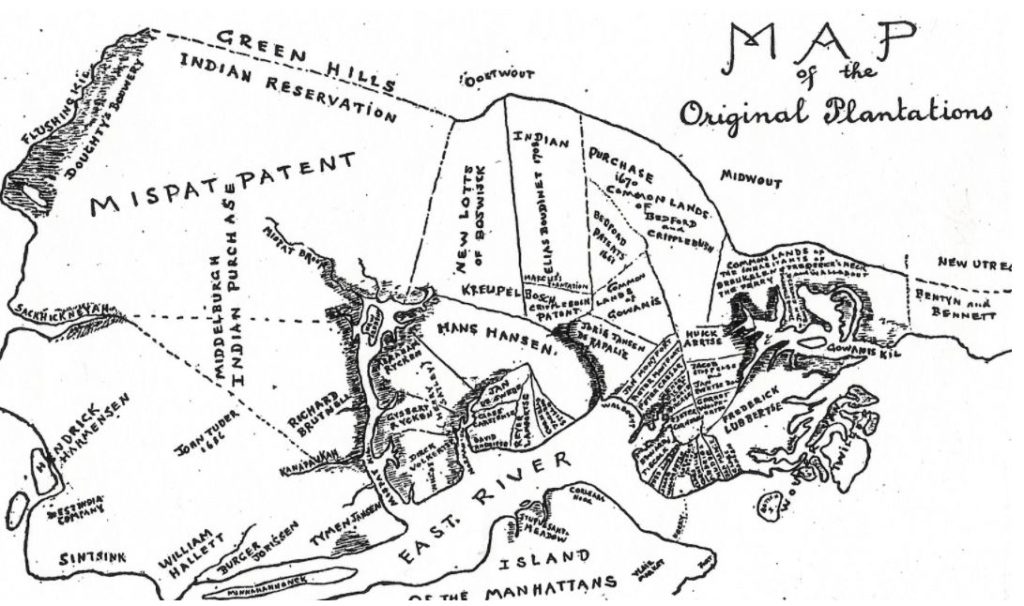
This old map shows the original plantations of Brooklyn’s Eastern District, including those of Hans Hansen and Jan de Zwede in Williamsburg, where our story about raining cats takes place.
The Grand Street Museum at 166 Grand Street
In 1878, Alden Spooner and his wife Susannah purchased a large L-shaped lot between Grand Street and South First Street on what had once been the farm of Abraham David Cannon (or Canon) in the 13th Ward.
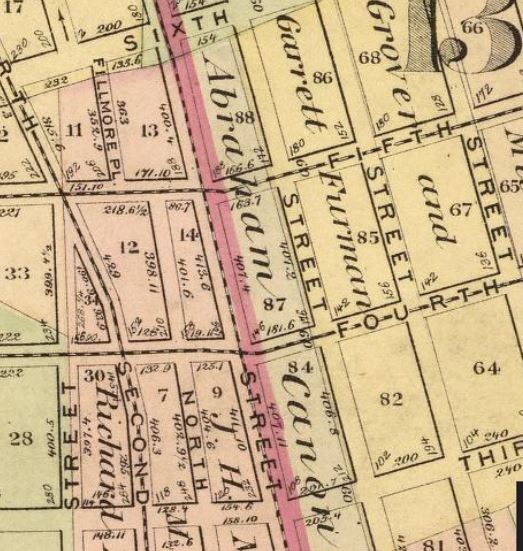
The Grand Street Museum at 166 Grand Street was between Fourth Street (today’s Bedford Avenue) and Fifth Street (today’s Driggs Avenue). This was once the property of Abraham Cannon (1751-1810), who was an owner of the Grand Street Market in Manhattan.
The lot had about 25 feet on frontage on Grand Street and 75 feet on South First Street. There were approximately five or six two-story wood frame buildings on the site, including the building at 166 Grand Street, which was occupied by A. Shellas’ Great American Furniture Manufacturing Company. Spooner derived a yearly income of about $2,200 from the property.
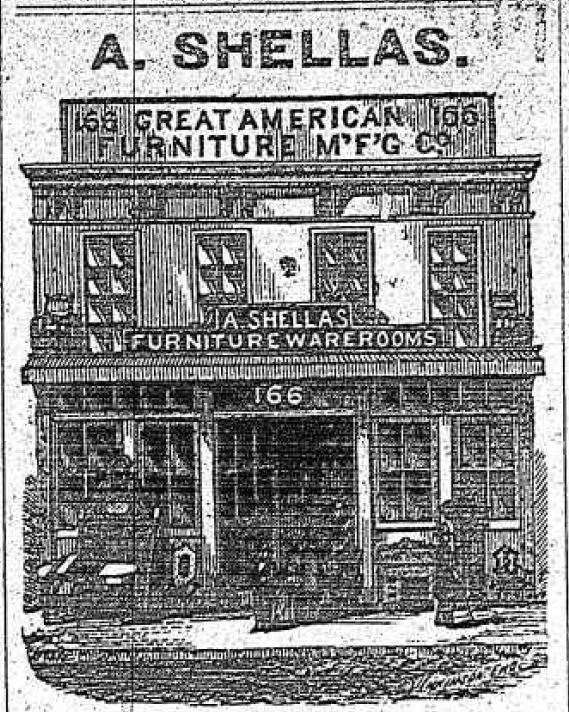
In 1878, 166 Grand Street was occupied by A. Shellas’ furniture store. Prior to this date, the building was home to Warren C. Demarest, a daguerrian (1855-58); Mr. J.S. Beals, photographic artist (1860); and the American Tea Company (1868). The frame buildings behind this on South First Street were residential with retail on the ground floors. (From the Newtown Register, January 18, 1877).
In the fall of 1894, Spooner leased the land to a Mr. Barry, who promised to construct a magnificent structure on the site, which he said would become the property of the land owner. He agreed to pay a yearly rental of $1,500. Mr. Barry paid one month’s rent, and the buildings were demolished and sold to a second-hand lumber dealer.
A few months later, Mr. Barry skipped town without paying the rent. Neighbors began complaining about the vacant lot, which, without a fence, had become a playground 24/7 for the neighborhood boys.

The Spooners were a prominent family in Brooklyn in the 1700s and 1800s. Patriarch Alden Jermain Spooner founded Long Island’s first newspaper, The Long Island Star, and his son, pictured here, was one of the founders of the Long Island Historical Society.
Finally, Spooner made a deal with John E. Pelletreu, George Pelletreu, and Robert Bruce, who proposed to open a theater on the site. The Grand Street Museum, designed by G.W. Wundrum, opened on September 12, 1885 with a production of “Unknown” starring Lottie Church.
In additional to a beautiful stage, the building featured a large museum menagerie and aquarium, filled with rare birds, reptiles, and animals (including lions, elephants, and bears) from all over the world. Admission to all the attractions was 10 cents.
In 1887, the Pelletreus and Bruce lost the theater for failure to pay rent. William H. Palmer took over for several years, and then in 1889 was refurbished and renamed the Grand Street Theatre under Mr. Wilson and Mr. Litchfield.
In 1893, the theater was called the People’s Theater. It was also during the 1890s that the street numbers were changed on Grand Street, with #166 becoming #194. Over the next 50 years, the 700-seat theater was called the Unique Theatre under Frank B. Carr (known locally as “Da Bum”), the Gaiety, and finally The Comedy Theatre (aka, William Fox’s Comedy Theatre), which featured vaudeville and moving pictures (Fox founded Fox Film Corporation, which today is Twentieth Century Fox).
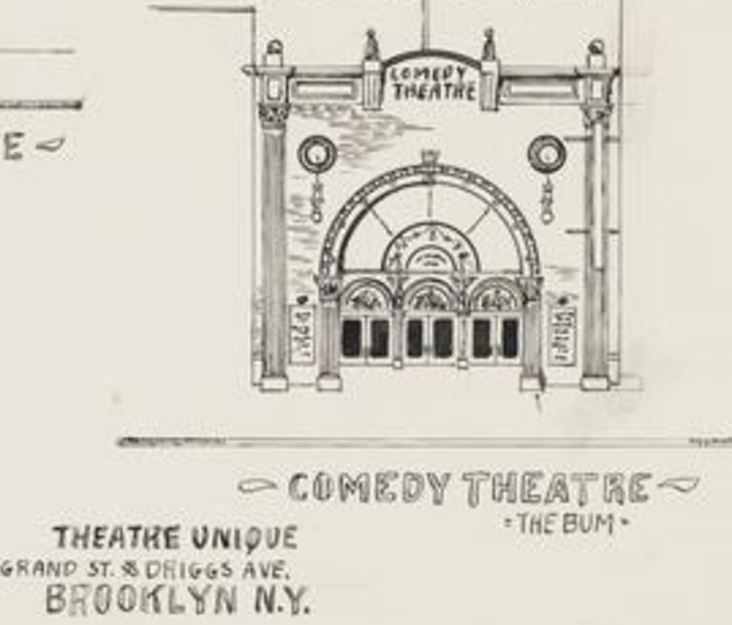
This illustration is all that’s left of the original theater on Grand Street. This building was demolished in 1923 and replaced with the building pictured below.
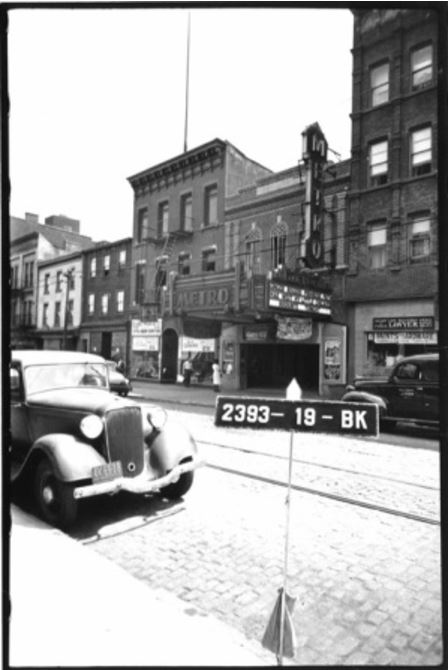
#194 Grand Street, once the Grand Street Museum, was home to the Metro Theatre from 1926 to 1947. Here’s the Grand Street side of the building from a 1939 tax record photo.
In 1923, Fox closed his theater and the building was demolished. A few years later, the Metro Theatre opened on the site, followed by another theater, a sheet metal factory, and a food service equipment building. Over the next few decades, two more theaters, a sheet metal factory, and a food service equipment company reportedly occupied the site.
Today, the site where cats once rained from the ceiling, and elephants and bears were on public display, is home to the Iglesia Carismatica Espiritu De Hermandad (The Spirit of Brotherhood Church).
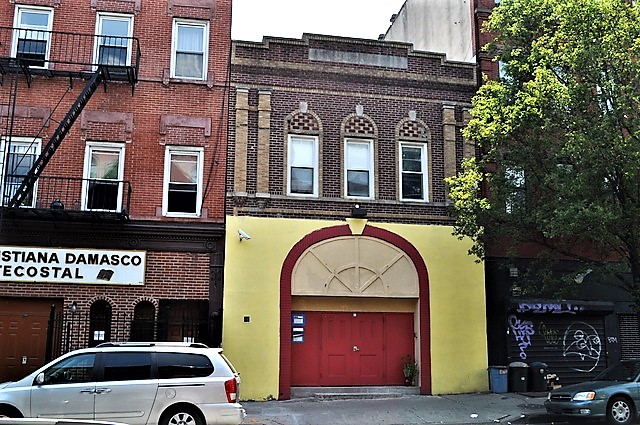
Here is the “back” of Iglesia Carismatica Espiritu De Hermandad at 194 Grand Street, which still looks like the front of the old Metro Theatre.
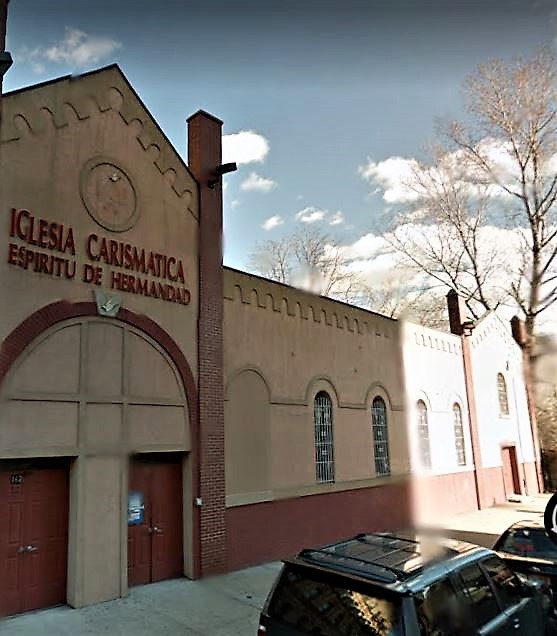
Here’s the front of the church on South First Street.



Such a great story about the SPCA! Appreciate all it’s done for the protection of cats 🙂
So glad you enjoyed the story!